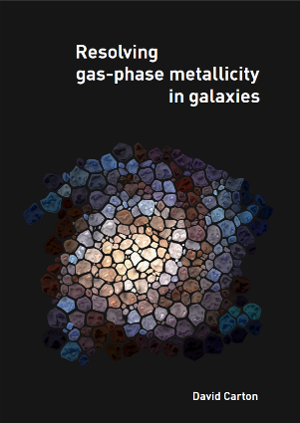Proefschrift
Resolving gas-phase metallicity in galaxies
Galaxies are environments where gas coalesces, cools, and is converted into stars. However, it remains unclear the exact mechanisms through which galaxies acquire, redistribute and lose their gas.
- Auteur
- David Carton
- Datum
- 29 juni 2017
- Links
- Thesis in Leiden Repository

The fresh gas that flows into galaxies is primarily composed of Hydrogen and Helium. But because a galaxy’s stars synthesize metals (elements heavier than Hydrogen and Helium), the diffuse gas in galaxies also becomes polluted with these new elements. As a result, by measuring the metal content (metallicity) of gas in galaxies, we can study the history of the gas flows. It is generally thought that the amount of gas in galaxies sets the rate at which stars are formed. Consequently, as the gas is exhausted, star formation rate will slow. Previously thought to be true for galaxies as a whole, our work suggests that this equilibrium may exist on much smaller scales within galaxies today. In this thesis we develop and apply a method that accounts for the blurring caused by the Earth’s atmosphere, which allows us to infer the true metallicity of more distant galaxies. With this we are able to show that, with respect to metallicity, the largest galaxies in the past were not dissimilar to those today.
